Miercoles 4/07/12 Dia de la Independencia Americana
27 mensajes
• Página 1 de 2 • 1, 2
Miercoles 4/07/12 Dia de la Independencia Americana
Feriado en US.
- admin
- Site Admin
- Mensajes: 165573
- Registrado: Mié Abr 21, 2010 9:02 pm
Re: Miercoles 4/07/12 Dia de la Independencia Americana
Copper July 04,07:19
Bid/Ask 3.5126 - 3.5133
Change -0.0231 -0.65%
Low/High 3.5042 - 3.5396
Charts
Nickel July 04,07:18
Bid/Ask 7.7150 - 7.7204
Change -0.0585 -0.75%
Low/High 7.6950 - 7.8338
Charts
Aluminum July 04,07:19
Bid/Ask 0.8697 - 0.8700
Change -0.0012 -0.14%
Low/High 0.8670 - 0.8762
Charts
Zinc July 04,07:18
Bid/Ask 0.8593 - 0.8597
Change -0.0065 -0.75%
Low/High 0.8525 - 0.8676
Charts
Lead July 04,07:18
Bid/Ask 0.8565 - 0.8572
Change -0.0081 -0.93%
Low/High 0.8477 - 0.8689
Bid/Ask 3.5126 - 3.5133
Change -0.0231 -0.65%
Low/High 3.5042 - 3.5396
Charts
Nickel July 04,07:18
Bid/Ask 7.7150 - 7.7204
Change -0.0585 -0.75%
Low/High 7.6950 - 7.8338
Charts
Aluminum July 04,07:19
Bid/Ask 0.8697 - 0.8700
Change -0.0012 -0.14%
Low/High 0.8670 - 0.8762
Charts
Zinc July 04,07:18
Bid/Ask 0.8593 - 0.8597
Change -0.0065 -0.75%
Low/High 0.8525 - 0.8676
Charts
Lead July 04,07:18
Bid/Ask 0.8565 - 0.8572
Change -0.0081 -0.93%
Low/High 0.8477 - 0.8689
- admin
- Site Admin
- Mensajes: 165573
- Registrado: Mié Abr 21, 2010 9:02 pm
Re: Miercoles 4/07/12 Dia de la Independencia Americana
Europe, Middle East & Africa
Index Name Value Change % Change Time
EURO STOXX 50 Price EUR 2,301.80 -18.63 -0.80% 07:02:30
FTSE 100 Index 5,676.23 -11.50 -0.20% 07:02:29
CAC 40 Index 3,248.69 -22.51 -0.69% 07:03:00
Deutsche Borse AG German Stock Index DAX 6,535.82 -42.39 -0.64% 07:01:38
IBEX 35 Index 7,152.70 -66.80 -0.93% 07:02:06
FTSE MIB Index 14,366.08 -128.33 -0.89% 07:02:09
AEX-Index 312.80 -1.54 -0.49% 07:02:00
OMX Stockholm 30 Index 1,033.13 -7.03 -0.68% 07:00:13
Swiss Market Index 6,174.76 -19.32 -0.31% 07:01:59
More Europe, Middle East & Africa Indexes
Asia-Pacific
Index Name Value Change % Change Time
Nikkei 225 9,104.17 +37.58 +0.41% 02:28:01
Hong Kong Hang Seng Index 19,709.75 -25.78 -0.13% 04:01:30
S&P/ASX 200 4,172.16 +44.94 +1.09% 02:20:00
Index Name Value Change % Change Time
EURO STOXX 50 Price EUR 2,301.80 -18.63 -0.80% 07:02:30
FTSE 100 Index 5,676.23 -11.50 -0.20% 07:02:29
CAC 40 Index 3,248.69 -22.51 -0.69% 07:03:00
Deutsche Borse AG German Stock Index DAX 6,535.82 -42.39 -0.64% 07:01:38
IBEX 35 Index 7,152.70 -66.80 -0.93% 07:02:06
FTSE MIB Index 14,366.08 -128.33 -0.89% 07:02:09
AEX-Index 312.80 -1.54 -0.49% 07:02:00
OMX Stockholm 30 Index 1,033.13 -7.03 -0.68% 07:00:13
Swiss Market Index 6,174.76 -19.32 -0.31% 07:01:59
More Europe, Middle East & Africa Indexes
Asia-Pacific
Index Name Value Change % Change Time
Nikkei 225 9,104.17 +37.58 +0.41% 02:28:01
Hong Kong Hang Seng Index 19,709.75 -25.78 -0.13% 04:01:30
S&P/ASX 200 4,172.16 +44.94 +1.09% 02:20:00
- admin
- Site Admin
- Mensajes: 165573
- Registrado: Mié Abr 21, 2010 9:02 pm
Re: Miercoles 4/07/12 Dia de la Independencia Americana
Treasurys Price Chg Yield %
2-Year Note -0/32 0.317
10-Year Note 4/32 1.621
* at close
7:13 a.m. EDT 07/04/12Futures Last Change Settle
Crude Oil 87.00 -0.66 87.66
Gold 1615.8 -6.0 1621.8
E-mini Dow 12839 -28 12867
E-mini S&P 500 1365.25 -2.75 1368.00
7:23 a.m. EDT 07/04/12Currencies Last (mid) Prior Day †
Japanese Yen (USD/JPY) 79.82 79.79
Euro (EUR/USD) 1.2563 1.2608
† Late Tuesday in New York.
2-Year Note -0/32 0.317
10-Year Note 4/32 1.621
* at close
7:13 a.m. EDT 07/04/12Futures Last Change Settle
Crude Oil 87.00 -0.66 87.66
Gold 1615.8 -6.0 1621.8
E-mini Dow 12839 -28 12867
E-mini S&P 500 1365.25 -2.75 1368.00
7:23 a.m. EDT 07/04/12Currencies Last (mid) Prior Day †
Japanese Yen (USD/JPY) 79.82 79.79
Euro (EUR/USD) 1.2563 1.2608
† Late Tuesday in New York.
- admin
- Site Admin
- Mensajes: 165573
- Registrado: Mié Abr 21, 2010 9:02 pm
Re: Miercoles 4/07/12 Dia de la Independencia Americana
Manchester United saldrá a bolsa en Nueva York
miércoles 4 de julio de 2012 06:19 GYT
Imprimir[-] Texto [+] Por Sharanya Hrishikesh y Ashutosh Pandey
(Reuters) - El Manchester United escogió a la bolsa de Nueva York (NYSE, por sus siglas en inglés) para su debut en los mercados, cerrando meses de especulaciones sobre cuál sería la elección de uno de los clubes de fútbol más importantes del mundo.
Después de estudiar primero una salida a bolsa en Hong Kong, los excampeones de la Liga Premier habían planeado una colocación de 1.000 millones de dólares (unos 790 millones de euros) en Singapur en la segunda mitad del año antes de frenar el proyecto debido a las turbulencias en los mercados.
El club de propiedad estadounidense presentó el martes el folleto de la operación ante la Comisión de Valores de Estados Unidos (SEC, por sus siglas en inglés) para obtener hasta 100 millones de dólares en una salida a bolsa con acciones ordinarias de Clase A en Nueva York.
El tamaño final de la salida a bolsa podría ser diferente, ya que las cantidades que se comunican inicialmente al regulador en Estados Unidos son utilizadas con el fin de calcular las comisiones de registro.
La diferencia con los 1.000 millones proyectados inicialmente no tiene por qué sorprender, según dijo Josef Schuster, fundador de la firma de servicios financieros de Chicago IPOX Schuster.
"Cuanta más baja la colocación en bolsa, mayor puede ser la valoración relativa (...) Esta puede ser simplemente una estrategia (...) Los operadores pueden creer que si el acuerdo es muy bajo, la compañía puede subir en la apertura".
El United, campeón de la Premier en un récord de 19 ocasiones, tiene una base mundial de 659 millones de aficionados, según una encuesta encargada por el club y llevada a cabo el año pasado por la firma de investigación de mercados Kantar. Casi la mitad se encuentra en la región Asia Pacífico.
"Está por ver cuánto se va a beneficiar el club de fútbol en Estados Unidos, donde el deporte no es muy popular (...) El lugar perfecto debería haber sido Londres", dijo a Reuters Jay Ritter, experto en salidas a bolsa de la Universidad de Florida.
(Traducido por la Redacción de Madrid; editado por Carlos Aliaga vía Mesa Santiago)
miércoles 4 de julio de 2012 06:19 GYT
Imprimir[-] Texto [+] Por Sharanya Hrishikesh y Ashutosh Pandey
(Reuters) - El Manchester United escogió a la bolsa de Nueva York (NYSE, por sus siglas en inglés) para su debut en los mercados, cerrando meses de especulaciones sobre cuál sería la elección de uno de los clubes de fútbol más importantes del mundo.
Después de estudiar primero una salida a bolsa en Hong Kong, los excampeones de la Liga Premier habían planeado una colocación de 1.000 millones de dólares (unos 790 millones de euros) en Singapur en la segunda mitad del año antes de frenar el proyecto debido a las turbulencias en los mercados.
El club de propiedad estadounidense presentó el martes el folleto de la operación ante la Comisión de Valores de Estados Unidos (SEC, por sus siglas en inglés) para obtener hasta 100 millones de dólares en una salida a bolsa con acciones ordinarias de Clase A en Nueva York.
El tamaño final de la salida a bolsa podría ser diferente, ya que las cantidades que se comunican inicialmente al regulador en Estados Unidos son utilizadas con el fin de calcular las comisiones de registro.
La diferencia con los 1.000 millones proyectados inicialmente no tiene por qué sorprender, según dijo Josef Schuster, fundador de la firma de servicios financieros de Chicago IPOX Schuster.
"Cuanta más baja la colocación en bolsa, mayor puede ser la valoración relativa (...) Esta puede ser simplemente una estrategia (...) Los operadores pueden creer que si el acuerdo es muy bajo, la compañía puede subir en la apertura".
El United, campeón de la Premier en un récord de 19 ocasiones, tiene una base mundial de 659 millones de aficionados, según una encuesta encargada por el club y llevada a cabo el año pasado por la firma de investigación de mercados Kantar. Casi la mitad se encuentra en la región Asia Pacífico.
"Está por ver cuánto se va a beneficiar el club de fútbol en Estados Unidos, donde el deporte no es muy popular (...) El lugar perfecto debería haber sido Londres", dijo a Reuters Jay Ritter, experto en salidas a bolsa de la Universidad de Florida.
(Traducido por la Redacción de Madrid; editado por Carlos Aliaga vía Mesa Santiago)
- admin
- Site Admin
- Mensajes: 165573
- Registrado: Mié Abr 21, 2010 9:02 pm
Re: Miercoles 4/07/12 Dia de la Independencia Americana
Ventas minoristas zona euro suben más que lo esperado en mayo
miércoles 4 de julio de 2012 06:21 GYT
Imprimir[-] Texto [+] BRUSELAS (Reuters) - Las ventas minoristas en la zona euro subieron un 0,6 por ciento mensual en mayo, tras una bajada del 1,4 por ciento el mes anterior, dijo el miércoles la oficina de estadísticas Eurostat.
La variación interanual de las ventas por menor fue de una reducción del 1,7 por ciento frente a una caída del 3,4 por ciento el mes anterior.
Las previsiones de un sondeo de Reuters eran de una subida mensual del 0,3 por ciento y una bajada interanual del 0,8 por ciento.
(brussels.newsroom@thomsonreuters.com +32-2-287-6830. Traducido por la Redacción de Madrid; editado por Carlos Aliaga vía Mesa Santiago
miércoles 4 de julio de 2012 06:21 GYT
Imprimir[-] Texto [+] BRUSELAS (Reuters) - Las ventas minoristas en la zona euro subieron un 0,6 por ciento mensual en mayo, tras una bajada del 1,4 por ciento el mes anterior, dijo el miércoles la oficina de estadísticas Eurostat.
La variación interanual de las ventas por menor fue de una reducción del 1,7 por ciento frente a una caída del 3,4 por ciento el mes anterior.
Las previsiones de un sondeo de Reuters eran de una subida mensual del 0,3 por ciento y una bajada interanual del 0,8 por ciento.
(brussels.newsroom@thomsonreuters.com +32-2-287-6830. Traducido por la Redacción de Madrid; editado por Carlos Aliaga vía Mesa Santiago
- admin
- Site Admin
- Mensajes: 165573
- Registrado: Mié Abr 21, 2010 9:02 pm
Re: Miercoles 4/07/12 Dia de la Independencia Americana
Las compras de los managers de servicios bajaron en Alemania a 49.9 en Junio, menor a los 50.3 esperado por los economistas. Otros reportes mostraron que los servicios y la produccion manufacturera se contrajeron por quinto mes en la zona euro y los servicios en China se expandieron a su menor ritmo en 10 meses. Draghi del ECB probablemente recortara las tasas en 25 puntos basicos a 0.75.
Los yields de Italia subieron.
Stocks in Europe Drop With Euro; Asian Shares Advance
By Stephen Kirkland - Jul 4, 2012 7:13 AM ET
European stocks fell from a two-month high and metals declined after Germany’s services industries unexpectedly shrank last month. The euro weakened amid speculation the European Central Bank will cut interest rates to a record low tomorrow.
The Stoxx Europe 600 (SXXP) Index slipped 0.4 percent at 7:10 a.m. in New York and Standard & Poor’s 500 Index futures dropped 0.2 percent. The euro depreciated 0.4 percent to $1.2564. Italy’s 10-year bond snapped four days of gains, and the cost of insuring Spanish debt against default increased for the first time in four days. Copper slipped 1.2 percent and Brent crude dropped 0.8 percent.
A gauge of services purchasing managers fell to 49.9 in June, less than the earlier reading of 50.3, according to London-based Markit Economics. Other reports showed euro-area services and manufacturing output contracted for a fifth month, and China’s services expanded at the slowest pace in 10 months. ECB President Mario Draghi will probably cut the benchmark rate by a quarter point to 0.75 percent, according to the median forecast of 21 economists in a Bloomberg survey.
“Slow growth dynamics and uncertainty are pressuring the euro,” said Gavin Friend, a London-based markets strategist at National Australia Bank Ltd. “The ECB will probably cut tomorrow, Draghi has hinted that an easing of policy is on the way. The euro will probably lag behind, with other currencies rallying more.”
The International Monetary Fund cut its U.S. growth estimate yesterday and said the Federal Reserve may need to further ease monetary policy.
Earnings Beat
The Stoxx 600 retreated from the highest level since May 3 as two shares dropped for every one that advanced. The number of shares changing hands in companies listed on the gauge was 33 percent less than the average over the past 30 days, according to data compiled by Bloomberg. BP Plc and Total SA led energy companies lower. Chr. Hansen A/S, the maker of natural food colors and cheese cultures, climbed 11 percent in Copenhagen after reporting earnings that exceeded estimates.
Futures on the S&P 500 (SPX) declined after the index completed the biggest three-day rally of the year. U.S. equity and bond markets are closed today for the Independence Day holiday.
A report on July 6 is forecast to show that U.S. employers added 90,000 people to payrolls in June, after a gain of 69,000 in May, according to a Bloomberg survey of 78 economists. Alcoa Inc., America’s biggest aluminum producer, is due to kick off the U.S. earnings-reporting season on July 9.
The euro fell 0.3 percent against the yen, dropping versus 13 of its 16 major peers. The krona climbed to the strongest level against the euro since December 2000 after Sweden’s central bank left its key interest rate unchanged.
Bunds Gain
The yield on Italy’s 10-year bond rose eight basis points to 5.71 percent, widening the spread with German bunds 13 basis points to 422 basis points. Italy’s budget deficit rose in the first quarter to 8 percent of gross domestic product, the highest in three years. The yield on five-year German debt fell five basis points to 0.51 percent, the lowest since June 19.
Spain’s 10-year yield climbed nine basis points to 6.33 percent, and credit-default swaps insuring the country’s debt rose 8.5 basis points to 500.5.
The MSCI Emerging Markets Index (MXEF) fell less than 0.1 percent. The Kospi Index gained 0.4 percent in South Korea as Hyundai Motor Co. (005380) rose 1.7 percent on their U.S. vehicle sales. The Hang Seng China Enterprises Index of mainland companies slipped 0.3 percent and Poland’s WIG20 Index sank 0.5 percent.
Los yields de Italia subieron.
Stocks in Europe Drop With Euro; Asian Shares Advance
By Stephen Kirkland - Jul 4, 2012 7:13 AM ET
European stocks fell from a two-month high and metals declined after Germany’s services industries unexpectedly shrank last month. The euro weakened amid speculation the European Central Bank will cut interest rates to a record low tomorrow.
The Stoxx Europe 600 (SXXP) Index slipped 0.4 percent at 7:10 a.m. in New York and Standard & Poor’s 500 Index futures dropped 0.2 percent. The euro depreciated 0.4 percent to $1.2564. Italy’s 10-year bond snapped four days of gains, and the cost of insuring Spanish debt against default increased for the first time in four days. Copper slipped 1.2 percent and Brent crude dropped 0.8 percent.
A gauge of services purchasing managers fell to 49.9 in June, less than the earlier reading of 50.3, according to London-based Markit Economics. Other reports showed euro-area services and manufacturing output contracted for a fifth month, and China’s services expanded at the slowest pace in 10 months. ECB President Mario Draghi will probably cut the benchmark rate by a quarter point to 0.75 percent, according to the median forecast of 21 economists in a Bloomberg survey.
“Slow growth dynamics and uncertainty are pressuring the euro,” said Gavin Friend, a London-based markets strategist at National Australia Bank Ltd. “The ECB will probably cut tomorrow, Draghi has hinted that an easing of policy is on the way. The euro will probably lag behind, with other currencies rallying more.”
The International Monetary Fund cut its U.S. growth estimate yesterday and said the Federal Reserve may need to further ease monetary policy.
Earnings Beat
The Stoxx 600 retreated from the highest level since May 3 as two shares dropped for every one that advanced. The number of shares changing hands in companies listed on the gauge was 33 percent less than the average over the past 30 days, according to data compiled by Bloomberg. BP Plc and Total SA led energy companies lower. Chr. Hansen A/S, the maker of natural food colors and cheese cultures, climbed 11 percent in Copenhagen after reporting earnings that exceeded estimates.
Futures on the S&P 500 (SPX) declined after the index completed the biggest three-day rally of the year. U.S. equity and bond markets are closed today for the Independence Day holiday.
A report on July 6 is forecast to show that U.S. employers added 90,000 people to payrolls in June, after a gain of 69,000 in May, according to a Bloomberg survey of 78 economists. Alcoa Inc., America’s biggest aluminum producer, is due to kick off the U.S. earnings-reporting season on July 9.
The euro fell 0.3 percent against the yen, dropping versus 13 of its 16 major peers. The krona climbed to the strongest level against the euro since December 2000 after Sweden’s central bank left its key interest rate unchanged.
Bunds Gain
The yield on Italy’s 10-year bond rose eight basis points to 5.71 percent, widening the spread with German bunds 13 basis points to 422 basis points. Italy’s budget deficit rose in the first quarter to 8 percent of gross domestic product, the highest in three years. The yield on five-year German debt fell five basis points to 0.51 percent, the lowest since June 19.
Spain’s 10-year yield climbed nine basis points to 6.33 percent, and credit-default swaps insuring the country’s debt rose 8.5 basis points to 500.5.
The MSCI Emerging Markets Index (MXEF) fell less than 0.1 percent. The Kospi Index gained 0.4 percent in South Korea as Hyundai Motor Co. (005380) rose 1.7 percent on their U.S. vehicle sales. The Hang Seng China Enterprises Index of mainland companies slipped 0.3 percent and Poland’s WIG20 Index sank 0.5 percent.
- admin
- Site Admin
- Mensajes: 165573
- Registrado: Mié Abr 21, 2010 9:02 pm
Re: Miercoles 4/07/12 Dia de la Independencia Americana
Estado de emergencia en Cajamarca, tres muertos en las manifestaciones de protesta entre loso oponentes de Newmont y la policia.
Deadly Newmont Protests Lead Peru to Call State of Emergency
By John Quigley - Jul 4, 2012 1:12 AM ET
Peru declared a state of emergency in an area of the northern Andes after three people died in clashes between police and opponents of Newmont Mining Corp. (NEM)’s $4.8 billion Minas Conga project.
The government imposed the measure in three provinces of the Cajamarca region where Newmont plans to build the copper and gold mine, Justice Minister Juan Jimenez told Lima-based Radio Programas yesterday. Authorities will investigate the cause of the deaths, Jimenez said.
Activists against the Conga mining project shout slogans as thousands of residents march on May 29, 2012, in Cajamarca, northern Peru, during a demonstration for peace and regional development as a prelude to scheduled protests against mining projects in the region.
Activists against the Conga mining project shout slogans as thousands of residents march on May 29, 2012, in Cajamarca, northern Peru, during a demonstration for peace and regional development as a prelude to scheduled protests against mining projects in the region. Photographer: Mayer Abanto/AFP/GettyImages
.The declaration comes a week after Newmont was cleared to resume work that was halted in November when its installations in the area were destroyed during six days of protests. President Ollanta Humala allowed the restart by the largest U.S. gold producer after it pledged to build reservoirs to ensure water supplies for farming in the region.
The clashes are a result of Humala’s government refusing to negotiate with those opposed to the project, regional president Gregorio Santos told Radio Programas yesterday. Newmont is committed to talks and to the region, according to an e-mail from the company’s local unit late yesterday.
Police fired tear gas and bullets at demonstrators after as many as 2,000 people planned to storm the town hall in Celendin, close to where the mine will be built, Radio Programas reported. Some protesters were armed and shot at the police, it said.
“We renew our commitment to Cajamarca and to our faith in dialog as a bridge to achieve understanding between everyone,” the statement from Newmont’s local unit said.
Deadly Newmont Protests Lead Peru to Call State of Emergency
By John Quigley - Jul 4, 2012 1:12 AM ET
Peru declared a state of emergency in an area of the northern Andes after three people died in clashes between police and opponents of Newmont Mining Corp. (NEM)’s $4.8 billion Minas Conga project.
The government imposed the measure in three provinces of the Cajamarca region where Newmont plans to build the copper and gold mine, Justice Minister Juan Jimenez told Lima-based Radio Programas yesterday. Authorities will investigate the cause of the deaths, Jimenez said.
Activists against the Conga mining project shout slogans as thousands of residents march on May 29, 2012, in Cajamarca, northern Peru, during a demonstration for peace and regional development as a prelude to scheduled protests against mining projects in the region.
Activists against the Conga mining project shout slogans as thousands of residents march on May 29, 2012, in Cajamarca, northern Peru, during a demonstration for peace and regional development as a prelude to scheduled protests against mining projects in the region. Photographer: Mayer Abanto/AFP/GettyImages
.The declaration comes a week after Newmont was cleared to resume work that was halted in November when its installations in the area were destroyed during six days of protests. President Ollanta Humala allowed the restart by the largest U.S. gold producer after it pledged to build reservoirs to ensure water supplies for farming in the region.
The clashes are a result of Humala’s government refusing to negotiate with those opposed to the project, regional president Gregorio Santos told Radio Programas yesterday. Newmont is committed to talks and to the region, according to an e-mail from the company’s local unit late yesterday.
Police fired tear gas and bullets at demonstrators after as many as 2,000 people planned to storm the town hall in Celendin, close to where the mine will be built, Radio Programas reported. Some protesters were armed and shot at the police, it said.
“We renew our commitment to Cajamarca and to our faith in dialog as a bridge to achieve understanding between everyone,” the statement from Newmont’s local unit said.
- admin
- Site Admin
- Mensajes: 165573
- Registrado: Mié Abr 21, 2010 9:02 pm
- admin
- Site Admin
- Mensajes: 165573
- Registrado: Mié Abr 21, 2010 9:02 pm
Re: Miercoles 4/07/12 Dia de la Independencia Americana
Como era la vida en US en 1776
Los Americanos tenian el mayor ingreso per capita y pagaban los menores impuestos en el mundo civilizado - y habian determinado mantener las cosas de esa manera.
En 1776, de las 13 colonias Americanas que estaban en existencia por mas de 150 anios - mas tiempo que el necesario para los ambiciosos y talentosos adquirieran dinero y tierras. Entre los mas ricos en sl Sur estaban los duenios de las haciendas y plantaciones como George Washington (el primer presidente). En el Norte los ingresos no eran menores con mercaderes como John Hancock (presidente del Congreso, firmo la Declaracion de la Independencia), y Robert Morris. Mas abajo estaban los abogados como John Adams (otro presidente), seguido por los taberneros, quienes ganaban mas o menos $100,000 hoy dia. Los doctores ganaban menos, igual los dentistas, los cuales no eran muchos.
En las colonias del norte, el 10% de la poblacion era duena del 45$ de la riqueza. En algunas partes del Sur, el 10% era dueno del 75% de la riqueza. Pero a diferencia de los demas paises en el mundo, US tenia una prospera clase media. Los agricultores enviaban toneladas de arroz, trigo y maiz al resto del mundo, con las ganancias enviaban a sus hijos a escuelas privadas y les compraban a sus esposas hermosos vestidos y carruajes. Los artesanos - sastres, carpinteros y otros tambien prosperaban, asi como los duenos de tiendas. Benjamin Franklyn le daba todo el credito a su esposa, Deborah, quien fue la que creo la riqueza de la familia con su habilidad para el comercio.
Fleming: What Life Was Like in 1776
Americans had the highest per capita income in the civilized world, paid the lowest taxes—and were determined to keep it that way
By THOMAS FLEMING
Almost every American knows the traditional story of July Fourth—the soaring idealism of the Declaration of Independence, the Continental Congress's grim pledge to defy the world's most powerful nation with their lives, their fortunes and their sacred honor. But what else about revolutionary America might help us feel closer to those founders in their tricornered hats, fancy waistcoats and tight knee-breeches?
Those Americans, it turns out, had the highest per capita income in the civilized world of their time. They also paid the lowest taxes—and they were determined to keep it that way.
By 1776, the 13 American colonies had been in existence for over 150 years—more than enough time for the talented and ambitious to acquire money and land. At the top of the South's earners were large planters such as George Washington. In the North their incomes were more than matched by merchants such as John Hancock and Robert Morris. Next came lawyers such as John Adams, followed by tavern keepers, who often cleared 1,000 pounds a year, or about $100,000 in modern money. Doctors were paid comparatively little. Ditto for dentists, who were almost nonexistent.
In the northern colonies, according to historical research, the top 10% of the population owned about 45% of the wealth. In some parts of the South, 10% owned 75% of the wealth. But unlike most other countries, America in 1776 had a thriving middle class. Well-to-do farmers shipped tons of corn and wheat and rice to the West Indies and Europe, using the profits to send their children to private schools and buy their wives expensive gowns and carriages. Artisans—tailors, carpenters and other skilled workmen—also prospered, as did shop owners who dealt in a variety of goods. Benjamin Franklin credited his shrewd wife, Deborah, with laying the foundation of their wealth with her tradeswoman's skills.
Several hundred miles inland was the "back country," and at the time of the Revolution, not many people went there by choice. Most were poor and landless—younger sons, for example, whose older brothers had inherited the family's property. Life on the outskirts of civilization was hard and often violent. Morals on the Western frontier were often much more relaxed than they were in the civilized East.
Enlarge Image
CloseBettman/Corbis
The Blue Anchor Inn, Philadelphia, Pa., 1776
.America in 1776 was also a diverse nation. The first census, taken in 1790, revealed that only about 60% of the people came from England. The rest were German, Irish, Dutch, Scottish, Swedish and African.
Men wore clothes that were as colorful as the ladies' garb. One male fashion plate in New York ordered a suit of "superfine scarlet plush and a vest of light blue plush." Among the ladies, the beauty business was already a major force in the economy. "Fashion dolls" wearing the latest styles circulated through the city and the country. Women regularly spent a half day getting their hair "permanented" for a ball. Ladies seeking to preserve the sheen of youth spent a fortune on "paints" from China and lip salves from India.
Molly Tilghman of Chestertown, Md., summed up the prevailing opinion when she told her cousin Polly Pearce: "Wisdom says beauty is a fading flower but it attracts more admiration than wit, goodness or anything else in this world."
Another American tradition beginning to take root was female independence. The wife of Sueton Grant ran her husband's shipping business in Newport, R.I., for more than 30 years after his death in 1744. As a teenager, Eliza Lucas began experimenting with various plants on her father's Wappoo Creek Plantation, near Charleston, S.C. Soon she was raising indigo, which became one of the most profitable crops in the South.
Philadelphia's Lydia Darragh, America's first female undertaker, operated her business for almost a decade before the Revolutionary War began. During the war she was one of George Washington's most successful spies.
"Domestic felicity" was considered vital to everyone's peace of mind, and although divorce was legal, it was also rare. Although money played a part in marriages among the more affluent, family life was often full of affection. The love letters Col. Thomas Jones of Virginia wrote to his wife began "My Dearest Life."
Not everyone achieved this level of bliss. One notoriously unhappy marriage involved Col. John Custis of Arlington, Va., and his wife, Frances Parke. According to local accounts, they would go for weeks without speaking. One day, on a carriage ride, Mrs. Custis realized he was driving their "equipage" straight into Chesapeake Bay.
"Where are you going, Mr. Custis?" she asked. "To hell, Madam," the colonel replied. "Drive on," she said. "Any place is better than Arlington."
The colonel—or his horses—apparently changed their minds.
By 1776, the Atlantic Ocean had become what one historian has called "an information highway" across which poured books, magazines, newspapers and copies of the debates in Parliament. The latter were read by John Adams, George Washington, Robert Morris and other politically minded men. They concluded that the British were planning to tax the Americans into the kind of humiliation that Great Britain had inflicted on Ireland.
As eight years of war engulfed the continent, not a few of the rebels saw that the Revolution was a spiritual enterprise that would never really end. Dr. Benjamin Rush, a Pennsylvanian who signed the Declaration of Independence, wrote that the war was only the first step in the Revolution's destiny to transform America and the world.
History confirmed his intuition. In the next hundred years, other nations and peoples would issue 200 similar declarations.
Mr. Fleming is a former president of the Society of American Historians. This article was adapted from his e-book, "What America Was Really Like in 1776," recently published by New Word City.
A version of this article appeared July 3, 2012, on page A15 in the U.S. edition of The Wall Street Journal, with the headline: What Life Was Like in 1776.
Los Americanos tenian el mayor ingreso per capita y pagaban los menores impuestos en el mundo civilizado - y habian determinado mantener las cosas de esa manera.
En 1776, de las 13 colonias Americanas que estaban en existencia por mas de 150 anios - mas tiempo que el necesario para los ambiciosos y talentosos adquirieran dinero y tierras. Entre los mas ricos en sl Sur estaban los duenios de las haciendas y plantaciones como George Washington (el primer presidente). En el Norte los ingresos no eran menores con mercaderes como John Hancock (presidente del Congreso, firmo la Declaracion de la Independencia), y Robert Morris. Mas abajo estaban los abogados como John Adams (otro presidente), seguido por los taberneros, quienes ganaban mas o menos $100,000 hoy dia. Los doctores ganaban menos, igual los dentistas, los cuales no eran muchos.
En las colonias del norte, el 10% de la poblacion era duena del 45$ de la riqueza. En algunas partes del Sur, el 10% era dueno del 75% de la riqueza. Pero a diferencia de los demas paises en el mundo, US tenia una prospera clase media. Los agricultores enviaban toneladas de arroz, trigo y maiz al resto del mundo, con las ganancias enviaban a sus hijos a escuelas privadas y les compraban a sus esposas hermosos vestidos y carruajes. Los artesanos - sastres, carpinteros y otros tambien prosperaban, asi como los duenos de tiendas. Benjamin Franklyn le daba todo el credito a su esposa, Deborah, quien fue la que creo la riqueza de la familia con su habilidad para el comercio.
Fleming: What Life Was Like in 1776
Americans had the highest per capita income in the civilized world, paid the lowest taxes—and were determined to keep it that way
By THOMAS FLEMING
Almost every American knows the traditional story of July Fourth—the soaring idealism of the Declaration of Independence, the Continental Congress's grim pledge to defy the world's most powerful nation with their lives, their fortunes and their sacred honor. But what else about revolutionary America might help us feel closer to those founders in their tricornered hats, fancy waistcoats and tight knee-breeches?
Those Americans, it turns out, had the highest per capita income in the civilized world of their time. They also paid the lowest taxes—and they were determined to keep it that way.
By 1776, the 13 American colonies had been in existence for over 150 years—more than enough time for the talented and ambitious to acquire money and land. At the top of the South's earners were large planters such as George Washington. In the North their incomes were more than matched by merchants such as John Hancock and Robert Morris. Next came lawyers such as John Adams, followed by tavern keepers, who often cleared 1,000 pounds a year, or about $100,000 in modern money. Doctors were paid comparatively little. Ditto for dentists, who were almost nonexistent.
In the northern colonies, according to historical research, the top 10% of the population owned about 45% of the wealth. In some parts of the South, 10% owned 75% of the wealth. But unlike most other countries, America in 1776 had a thriving middle class. Well-to-do farmers shipped tons of corn and wheat and rice to the West Indies and Europe, using the profits to send their children to private schools and buy their wives expensive gowns and carriages. Artisans—tailors, carpenters and other skilled workmen—also prospered, as did shop owners who dealt in a variety of goods. Benjamin Franklin credited his shrewd wife, Deborah, with laying the foundation of their wealth with her tradeswoman's skills.
Several hundred miles inland was the "back country," and at the time of the Revolution, not many people went there by choice. Most were poor and landless—younger sons, for example, whose older brothers had inherited the family's property. Life on the outskirts of civilization was hard and often violent. Morals on the Western frontier were often much more relaxed than they were in the civilized East.
Enlarge Image
CloseBettman/Corbis
The Blue Anchor Inn, Philadelphia, Pa., 1776
.America in 1776 was also a diverse nation. The first census, taken in 1790, revealed that only about 60% of the people came from England. The rest were German, Irish, Dutch, Scottish, Swedish and African.
Men wore clothes that were as colorful as the ladies' garb. One male fashion plate in New York ordered a suit of "superfine scarlet plush and a vest of light blue plush." Among the ladies, the beauty business was already a major force in the economy. "Fashion dolls" wearing the latest styles circulated through the city and the country. Women regularly spent a half day getting their hair "permanented" for a ball. Ladies seeking to preserve the sheen of youth spent a fortune on "paints" from China and lip salves from India.
Molly Tilghman of Chestertown, Md., summed up the prevailing opinion when she told her cousin Polly Pearce: "Wisdom says beauty is a fading flower but it attracts more admiration than wit, goodness or anything else in this world."
Another American tradition beginning to take root was female independence. The wife of Sueton Grant ran her husband's shipping business in Newport, R.I., for more than 30 years after his death in 1744. As a teenager, Eliza Lucas began experimenting with various plants on her father's Wappoo Creek Plantation, near Charleston, S.C. Soon she was raising indigo, which became one of the most profitable crops in the South.
Philadelphia's Lydia Darragh, America's first female undertaker, operated her business for almost a decade before the Revolutionary War began. During the war she was one of George Washington's most successful spies.
"Domestic felicity" was considered vital to everyone's peace of mind, and although divorce was legal, it was also rare. Although money played a part in marriages among the more affluent, family life was often full of affection. The love letters Col. Thomas Jones of Virginia wrote to his wife began "My Dearest Life."
Not everyone achieved this level of bliss. One notoriously unhappy marriage involved Col. John Custis of Arlington, Va., and his wife, Frances Parke. According to local accounts, they would go for weeks without speaking. One day, on a carriage ride, Mrs. Custis realized he was driving their "equipage" straight into Chesapeake Bay.
"Where are you going, Mr. Custis?" she asked. "To hell, Madam," the colonel replied. "Drive on," she said. "Any place is better than Arlington."
The colonel—or his horses—apparently changed their minds.
By 1776, the Atlantic Ocean had become what one historian has called "an information highway" across which poured books, magazines, newspapers and copies of the debates in Parliament. The latter were read by John Adams, George Washington, Robert Morris and other politically minded men. They concluded that the British were planning to tax the Americans into the kind of humiliation that Great Britain had inflicted on Ireland.
As eight years of war engulfed the continent, not a few of the rebels saw that the Revolution was a spiritual enterprise that would never really end. Dr. Benjamin Rush, a Pennsylvanian who signed the Declaration of Independence, wrote that the war was only the first step in the Revolution's destiny to transform America and the world.
History confirmed his intuition. In the next hundred years, other nations and peoples would issue 200 similar declarations.
Mr. Fleming is a former president of the Society of American Historians. This article was adapted from his e-book, "What America Was Really Like in 1776," recently published by New Word City.
A version of this article appeared July 3, 2012, on page A15 in the U.S. edition of The Wall Street Journal, with the headline: What Life Was Like in 1776.
- admin
- Site Admin
- Mensajes: 165573
- Registrado: Mié Abr 21, 2010 9:02 pm
Re: Miercoles 4/07/12 Dia de la Independencia Americana
Canada
S&P/TSX COMPOSITE INDEX 11,922.75 +74.00
(0.62%) 12:06
S&P/TSX EQUITY INDEX 12,255.46 +77.00
(0.63%) 12:05
S&P/TSX 60 INDEX 683.70 +4.94
(0.73%) 12:05
S&P 500/TORONTO STOCK EXCHANGE VENTURE COMPOSITE INDEX 1,234.11 +8.61
(0.70%) 12:06
Mexico
MEXICAN STOCK EXCHANGE MEXICAN BOLSA IPC INDEX 40,455.84 +21.12
(0.05%) 12:07
MEXICAN STOCK EXCHANGE INMEX INDEX 2,204.75 -2.42
(-0.11%) 12:05
MEXICAN STOCK EXCHANGE IMC 30 INDEX 484.02 +0.70
(0.15%) 12:05
MEXICAN STOCK EXCHANGE TOTAL RETURN INDEX 48,961.68 +40.07
(0.08%) 12:05
Panama
BOLSA DE VALORES DE PANAMA GENERAL INDEX 392.03 +0.00
(0.00%) 07/03
Argentina
BUENOS AIRES STOCK EXCHANGE MERVAL INDEX 2,419.53 +5.72
(0.24%) 12:05
BUENOS AIRES STOCK EXCHANGE BURCAP INDEX 8,810.78 +10.29
(0.12%) 12:05
MERVAL ARGENTINA INDEX 1,681.10 +6.82
(0.41%) 12:04
INDICE BOLSA GENERAL BOLSA-G 146,549.62 -119.80
(-0.08%) 12:05
Brazil
BOVESPA BRASIL SAO PAULO STOCK EXCHANGE INDEX 56,071.33 +291.00
(0.52%) 12:27
SAO PAULO STOCK EXCHANGE IBRX INDEX 20,300.52 +56.38
(0.28%) 12:10
SAO PAULO STOCK EXCHANGE ELECTRICAL ENERGY INDEX 34,760.05 -94.58
(-0.27%) 12:10
BOVESPA TELECOMMUNICATIONS SECTOR INDEX 0.00 +0.00
(0.00%) 12:26
BOVESPA EXCHANGE SHARES WITH DIFFERENTIATED CORPORATE GOVERNANCE INDEX 7,132.72 +14.08
(0.20%) 12:09
BOVESPA VALOR SECOND LINE INDEX 6,580.33 +29.04
(0.44%) 12:11
SAO PAULO STOCK EXCHANGE 50 INDEX 8,364.30 +23.83
(0.29%) 12:10
Chile
SANTIAGO STOCK EXCHANGE IPSA INDEX 4,404.64 -15.69
(-0.35%) 12:24
SANTIAGO STOCK EXCHANGE IGPA INDEX 21,099.28 -62.02
(-0.29%) 12:26
CHILE INTER-10 INDEX 5,703.18 -31.33
(-0.55%) 12:26
CHILE 65 INDEX 3,109.88 +1.30
(0.04%) 11:13
CHILE LARGE CAP INDEX 2,981.50 +1.44
(0.05%) 11:13
CHILE SMALL CAP INDEX 4,007.76 -0.01
(-0.00%) 09:23
Venezuela
CARACAS STOCK EXCHANGE STOCK MARKET INDEX 247,369.61 +468.84
(0.19%) 12:19
Peru
BOLSA DE VALORES DE LIMA GENERAL SECTOR INDEX 20,735.25 -41.58
(-0.20%) 12:09
BOLSA DE VALORES DE LIMA SELECTIVE SECTOR INDEX 30,317.26 -73.46
(-0.24%) 12:06
S&P/TSX COMPOSITE INDEX 11,922.75 +74.00
(0.62%) 12:06
S&P/TSX EQUITY INDEX 12,255.46 +77.00
(0.63%) 12:05
S&P/TSX 60 INDEX 683.70 +4.94
(0.73%) 12:05
S&P 500/TORONTO STOCK EXCHANGE VENTURE COMPOSITE INDEX 1,234.11 +8.61
(0.70%) 12:06
Mexico
MEXICAN STOCK EXCHANGE MEXICAN BOLSA IPC INDEX 40,455.84 +21.12
(0.05%) 12:07
MEXICAN STOCK EXCHANGE INMEX INDEX 2,204.75 -2.42
(-0.11%) 12:05
MEXICAN STOCK EXCHANGE IMC 30 INDEX 484.02 +0.70
(0.15%) 12:05
MEXICAN STOCK EXCHANGE TOTAL RETURN INDEX 48,961.68 +40.07
(0.08%) 12:05
Panama
BOLSA DE VALORES DE PANAMA GENERAL INDEX 392.03 +0.00
(0.00%) 07/03
Argentina
BUENOS AIRES STOCK EXCHANGE MERVAL INDEX 2,419.53 +5.72
(0.24%) 12:05
BUENOS AIRES STOCK EXCHANGE BURCAP INDEX 8,810.78 +10.29
(0.12%) 12:05
MERVAL ARGENTINA INDEX 1,681.10 +6.82
(0.41%) 12:04
INDICE BOLSA GENERAL BOLSA-G 146,549.62 -119.80
(-0.08%) 12:05
Brazil
BOVESPA BRASIL SAO PAULO STOCK EXCHANGE INDEX 56,071.33 +291.00
(0.52%) 12:27
SAO PAULO STOCK EXCHANGE IBRX INDEX 20,300.52 +56.38
(0.28%) 12:10
SAO PAULO STOCK EXCHANGE ELECTRICAL ENERGY INDEX 34,760.05 -94.58
(-0.27%) 12:10
BOVESPA TELECOMMUNICATIONS SECTOR INDEX 0.00 +0.00
(0.00%) 12:26
BOVESPA EXCHANGE SHARES WITH DIFFERENTIATED CORPORATE GOVERNANCE INDEX 7,132.72 +14.08
(0.20%) 12:09
BOVESPA VALOR SECOND LINE INDEX 6,580.33 +29.04
(0.44%) 12:11
SAO PAULO STOCK EXCHANGE 50 INDEX 8,364.30 +23.83
(0.29%) 12:10
Chile
SANTIAGO STOCK EXCHANGE IPSA INDEX 4,404.64 -15.69
(-0.35%) 12:24
SANTIAGO STOCK EXCHANGE IGPA INDEX 21,099.28 -62.02
(-0.29%) 12:26
CHILE INTER-10 INDEX 5,703.18 -31.33
(-0.55%) 12:26
CHILE 65 INDEX 3,109.88 +1.30
(0.04%) 11:13
CHILE LARGE CAP INDEX 2,981.50 +1.44
(0.05%) 11:13
CHILE SMALL CAP INDEX 4,007.76 -0.01
(-0.00%) 09:23
Venezuela
CARACAS STOCK EXCHANGE STOCK MARKET INDEX 247,369.61 +468.84
(0.19%) 12:19
Peru
BOLSA DE VALORES DE LIMA GENERAL SECTOR INDEX 20,735.25 -41.58
(-0.20%) 12:09
BOLSA DE VALORES DE LIMA SELECTIVE SECTOR INDEX 30,317.26 -73.46
(-0.24%) 12:06
- admin
- Site Admin
- Mensajes: 165573
- Registrado: Mié Abr 21, 2010 9:02 pm
- admin
- Site Admin
- Mensajes: 165573
- Registrado: Mié Abr 21, 2010 9:02 pm
Re: Miercoles 4/07/12 Dia de la Independencia Americana
Los graficos del dia, 
.

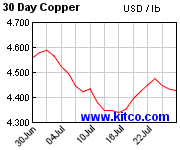
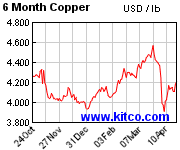
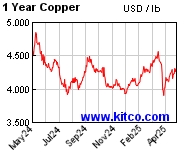
.

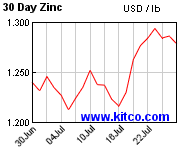
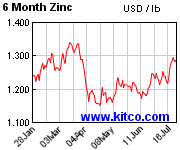
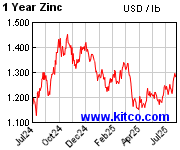
.

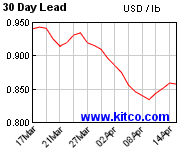
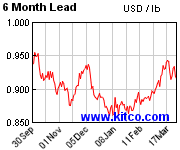
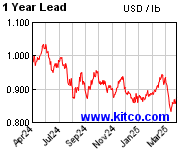
.
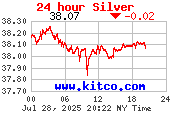
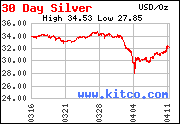
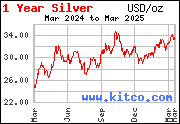
.
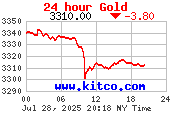

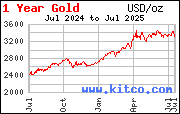
.
.




.




.




.



.



.
- Comodoro
- Mensajes: 980
- Registrado: Jue May 06, 2010 8:24 am
- Ubicación: LIMA
Re: Miercoles 4/07/12 Dia de la Independencia Americana
No se pueden ver los gráficos subidos al foro, pero si se pueden ver los gráficos vinculados desde otros sitios.
- daniel_ocean
- Mensajes: 101
- Registrado: Mar May 11, 2010 10:44 am
Re: Miercoles 4/07/12 Dia de la Independencia Americana
miércoles 4 de julio del 2012
08:55
La minería peruana crece menos que producción mundial por segundo año. De 5,5% que tenía en el 2009, representó apenas 4% en el 2011. Expertos advierten que situación se debe al retraso de grandes proyectos mineros.
Empresas mineras están extendiendo sus procesos de inversión debido a conflictos sociales.
ÁLVARO GASTAÑADUÍ RAMÍREZ
La producción minera del Perú no goza de buena salud, al menos por ahora. Desde el 2009, la variación real del Producto Bruto Interno minero está cayendo desde -1,4% ese año a 1,10% el año pasado, según el Marco Macroeconómico Multianual 2012-2014 del Ministerio de Economía.
Ese estado de salud, delicado pero con pronósticos de recuperación, fue ratificado ayer en un informe presentado por la consultora Gerens, que reveló que por segundo año consecutivo la producción minera peruana volvió a descender en comparación con lo producido en el mundo. Mientras que el 2009 la minería peruana representó el 5,5% de la producción mundial, en el 2010 cayó a 4,5% y el 2011 volvió a caer y se ubicó en 4%. VEA INFOGRAFÍA
Según diversos especialistas, son varias las razones de lo que está sucediendo.
COMPLEJA SITUACIÓN
Para el presidente del Instituto de Ingenieros de Minas, Rómulo Mucho, ahora hay una severa reducción de las reservas de minerales que están obligando a las empresas a producir menos, es el caso de Southern Perú, Tintaya y Yanacocha.
Asimismo, hay una demora en la ejecución de diversos proyectos mineros, como el de Tía María, Conga, la ampliación de Toquepala, entre otros. A ello habría que agregar la suspensión de proyectos, como Río Blanco, en Piura, que no han permitido que el Perú siga incrementando su producción minera.
Para Mucho, que fue viceministro de Minas, la demora se debe también a los conflictos sociales, que dilataron o interrumpieron algunos de esos proyectos.
AÚN NO SE SIENTE LA CAÍDA
De manera coincidente, el decano de la Facultad de Economía de la Universidad de Lima, Javier Zúñiga, advirtió que debido a los conflictos sociales muchas empresas mineras están alargando sus procesos de inversión. Asimismo, explicó que si el país no ha sentido la caída de la producción minera es porque los precios de los metales han seguido subiendo.
Sin embargo, reconoce que el futuro de la producción minera en el Perú es incierto, pues China –el principal comprador del mundo– está reduciendo sus adquisiciones, lo que podría afectar al país.
También consideró que esa incertidumbre está reduciendo las perspectivas de crecimiento del Perú para este año. Explicó que de 6%, que se calculaba hasta hace algunas semanas, “ahora estamos en 5,1%”.
RETRASOS A PLAZOS
En tanto, el ex ministro de Energía y Minas, Pedro Sánchez, aseguró que existía un retraso temporal en la ejecución de grandes proyectos mineros, como Tía María, Quellaveco, Toromocho y la ampliación de Antamina. Aseguró que cuando se superen los problemas que generan esos retrasos, el Perú recuperaría su posición mundial e, incluso, avanzaría más.
En ese sentido, Rómulo Mucho recordó que el Perú tiene en cartera proyectos por más de US$53.000 millones, que, de ejecutarse, incrementarían la producción minera en el Perú.
Asimismo, consideró como alentador que en el Perú se haya invertido más de US$800 millones en exploración el 2011, lo que reitera la confianza de los empresarios en el país. Sin embargo, advirtió que los conflictos sociales podrían originar que muchos de esos proyectos no se ejecuten.
También señaló que para concretar todos esos proyectos las empresas mineras necesitarían contratar para los próximos cinco años entre 6.000 ingenieros de minas y 40.000 técnicos debidamente calificados.
08:55
La minería peruana crece menos que producción mundial por segundo año. De 5,5% que tenía en el 2009, representó apenas 4% en el 2011. Expertos advierten que situación se debe al retraso de grandes proyectos mineros.
Empresas mineras están extendiendo sus procesos de inversión debido a conflictos sociales.
ÁLVARO GASTAÑADUÍ RAMÍREZ
La producción minera del Perú no goza de buena salud, al menos por ahora. Desde el 2009, la variación real del Producto Bruto Interno minero está cayendo desde -1,4% ese año a 1,10% el año pasado, según el Marco Macroeconómico Multianual 2012-2014 del Ministerio de Economía.
Ese estado de salud, delicado pero con pronósticos de recuperación, fue ratificado ayer en un informe presentado por la consultora Gerens, que reveló que por segundo año consecutivo la producción minera peruana volvió a descender en comparación con lo producido en el mundo. Mientras que el 2009 la minería peruana representó el 5,5% de la producción mundial, en el 2010 cayó a 4,5% y el 2011 volvió a caer y se ubicó en 4%. VEA INFOGRAFÍA
Según diversos especialistas, son varias las razones de lo que está sucediendo.
COMPLEJA SITUACIÓN
Para el presidente del Instituto de Ingenieros de Minas, Rómulo Mucho, ahora hay una severa reducción de las reservas de minerales que están obligando a las empresas a producir menos, es el caso de Southern Perú, Tintaya y Yanacocha.
Asimismo, hay una demora en la ejecución de diversos proyectos mineros, como el de Tía María, Conga, la ampliación de Toquepala, entre otros. A ello habría que agregar la suspensión de proyectos, como Río Blanco, en Piura, que no han permitido que el Perú siga incrementando su producción minera.
Para Mucho, que fue viceministro de Minas, la demora se debe también a los conflictos sociales, que dilataron o interrumpieron algunos de esos proyectos.
AÚN NO SE SIENTE LA CAÍDA
De manera coincidente, el decano de la Facultad de Economía de la Universidad de Lima, Javier Zúñiga, advirtió que debido a los conflictos sociales muchas empresas mineras están alargando sus procesos de inversión. Asimismo, explicó que si el país no ha sentido la caída de la producción minera es porque los precios de los metales han seguido subiendo.
Sin embargo, reconoce que el futuro de la producción minera en el Perú es incierto, pues China –el principal comprador del mundo– está reduciendo sus adquisiciones, lo que podría afectar al país.
También consideró que esa incertidumbre está reduciendo las perspectivas de crecimiento del Perú para este año. Explicó que de 6%, que se calculaba hasta hace algunas semanas, “ahora estamos en 5,1%”.
RETRASOS A PLAZOS
En tanto, el ex ministro de Energía y Minas, Pedro Sánchez, aseguró que existía un retraso temporal en la ejecución de grandes proyectos mineros, como Tía María, Quellaveco, Toromocho y la ampliación de Antamina. Aseguró que cuando se superen los problemas que generan esos retrasos, el Perú recuperaría su posición mundial e, incluso, avanzaría más.
En ese sentido, Rómulo Mucho recordó que el Perú tiene en cartera proyectos por más de US$53.000 millones, que, de ejecutarse, incrementarían la producción minera en el Perú.
Asimismo, consideró como alentador que en el Perú se haya invertido más de US$800 millones en exploración el 2011, lo que reitera la confianza de los empresarios en el país. Sin embargo, advirtió que los conflictos sociales podrían originar que muchos de esos proyectos no se ejecuten.
También señaló que para concretar todos esos proyectos las empresas mineras necesitarían contratar para los próximos cinco años entre 6.000 ingenieros de minas y 40.000 técnicos debidamente calificados.
- RCHF
- Mensajes: 3740
- Registrado: Vie Abr 23, 2010 12:32 pm
27 mensajes
• Página 1 de 2 • 1, 2
¿Quién está conectado?
Usuarios navegando por este Foro: No hay usuarios registrados visitando el Foro y 22 invitados
